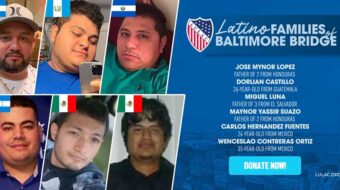
LAS VEGAS – As the 2014 midterm elections quickly approach, the battle against voter suppression is still being waged. This was a topic hit hard at the 105th NAACP convention,held here this month, and took an entire plenary panel, a CLE (Continuing Legal Education seminar) session, along with being emphasized in many other events. The July 19-23 convention comes only months before this year’s midterm elections. In November, voters will chose their congressional representative and in many states, their U.S. senator, governor, state lawmakers and local offices and referendum.
These elections are also the first to be held after the infamous Shelby County v. Holder ruling handed down by the Supreme Court just one year ago. The NAACP is a non-partisan organization, which always points out that it seeks to ensure fair representation for all. But their animosity towards the relationship between voter suppression and the concentration of political power in the hands of the extreme “tea party” subset of the Republican Party was clear. The main plenary panel, which included speakers such as political activists and leader of the Moral Mondays movement, Dr. William J. Barber, the senior director of voting rights for the NAACP, Jotaka Eaddy, and others discussed strategies for responding to suppression, and expanding the electorate.
There was a sense that there is hope for a shift in political power towards a broader and more socially conscious coalition, with the power of African American voters (and the growing Latino population) at the center.
During a panel of legal experts on voter suppression, Daniel Ho, of the ACLU Voting Rights Project, noted that after 2008, 20 states attempted to pass some type of voter suppression law. What was so significant about 2008? he asked. This could be seen as a rhetorical question, but the facts are still impressive: African American voters turned out at a higher rate than white voters (repeated in 2012). Just as an example, in North Carolina, 70 percent of African American voters used early voting, where previously it was disproportionately white.
In 2013, North Carolina’s Republican dominated state government passed a package of voter suppression laws, which among other things, did away with same day registration for students, cut early voting from 17 to 10 days, and most significantly, it requires every voter to show a state-approved photo ID.
The Justice Department and others filed suit against the state for discrimination. Before the Supreme Court’s 2013 Shelby County v. Holder decision, which gutted the Voting Rights Act, such laws like North Carolina’s would have been blocked by the Department of Justice. But that decision fundamentally shifted the playing field, and forced voting rights advocates to change strategy.
Since the high court decision left Sections 2 and 3(c) of the VRA intact, Attorney General Eric Holder is currently using Section 2 to challenge North Carolina’s voter ID requirements and changes to early voting.
The problem with an after the fact legal approach is that they can take a long time: Allison Riggs, of the Southern Coalition for Social Justice, commented that she is still litigating a case under Section 2 that she filed in 2011.
Congress is currently trying to pass what is being called the Voting Rights Act Amendment of 2014. This amendment is being seen as a bipartisan way to re-establish some of the protections to voting rights that was gutted by the Shelby v Holder ruling.
Yet, many voting rights advocates are not on board with the amendment, feeling it only gives “half a loaf of bread” as opposed to the “whole loaf,” that advocates should be fighting for- to paraphrase Dr. William J. Barber from the plenary panel. One of the shortcomings of the amendment, noted by advocates, is that it does not count Voter ID laws as discriminatory.
Latino Victory Foundation President Cristobal J. Alex said there needed to be an “affirmative right to vote for all.”
While Eaddy said activists needed to get out of the habit of “popcorn activism,” and get into staying in for the long haul in order to fight the long battle against discrimination, all agreed that there was no quick fix, but rather a need to build a large movement.
Barber called what was going on in the government as “Grand Theft Democracy.” The thievery runs the gamut from the voter suppression laws to the GOP Congress and conservative Supreme Court’s undermining of civil rights to the constant obstructionism thrown at the nation’s first black president.
College student Eboni Brown, an intern for the NAACP, urged special attention to educating people on their rights. “There needs to be an increase in voter education. Many people don’t know the power of their vote or don’t see the use of it,” she said.
Roland Martin, who hosted the voter suppression panel, paraphrased a famous quote to the battle against discrimination and voter suppression, “We must fight until hell freezes over… And then we fight on the ice.”
Photo: This slide from a power point presentation given during the NAACP convention highlights some of the far right’s strategy on voter suppression. (Chauncey Robinson/PW)












Comments